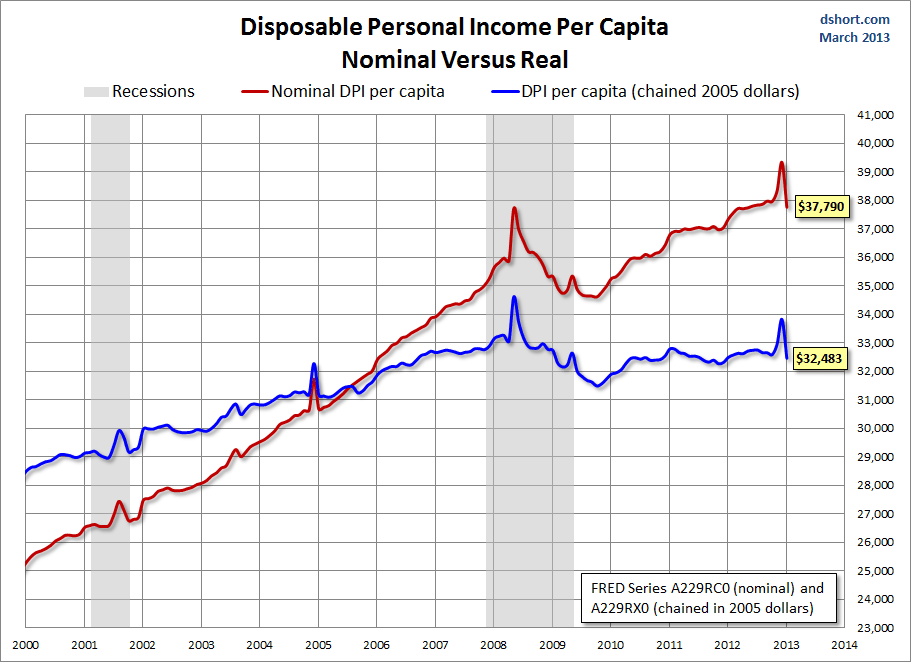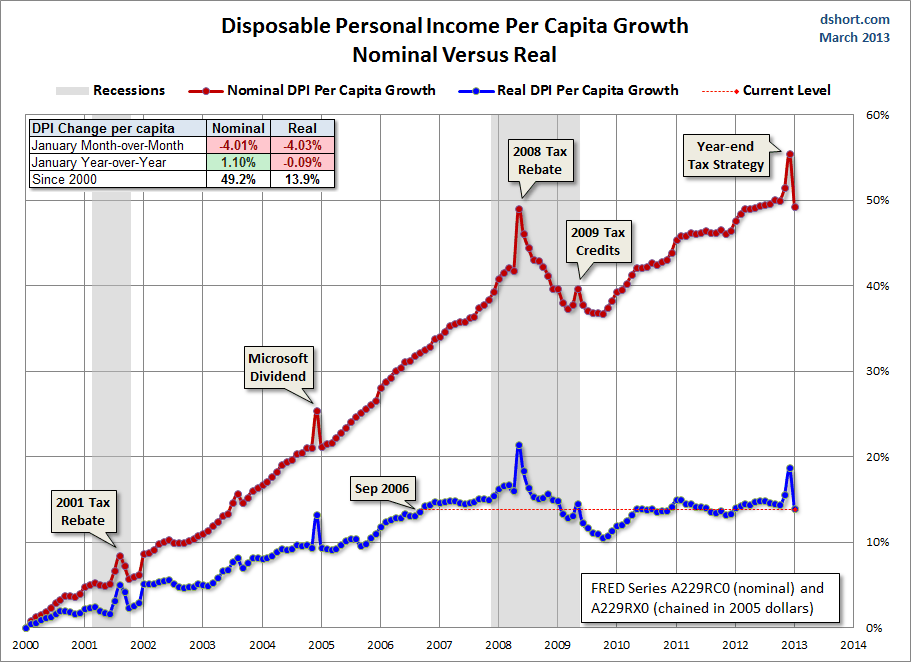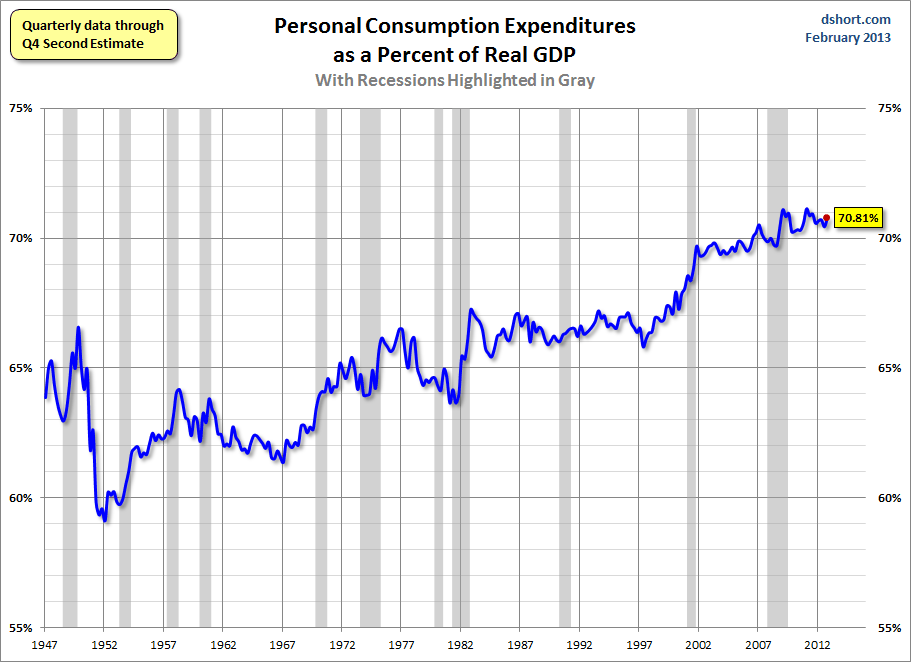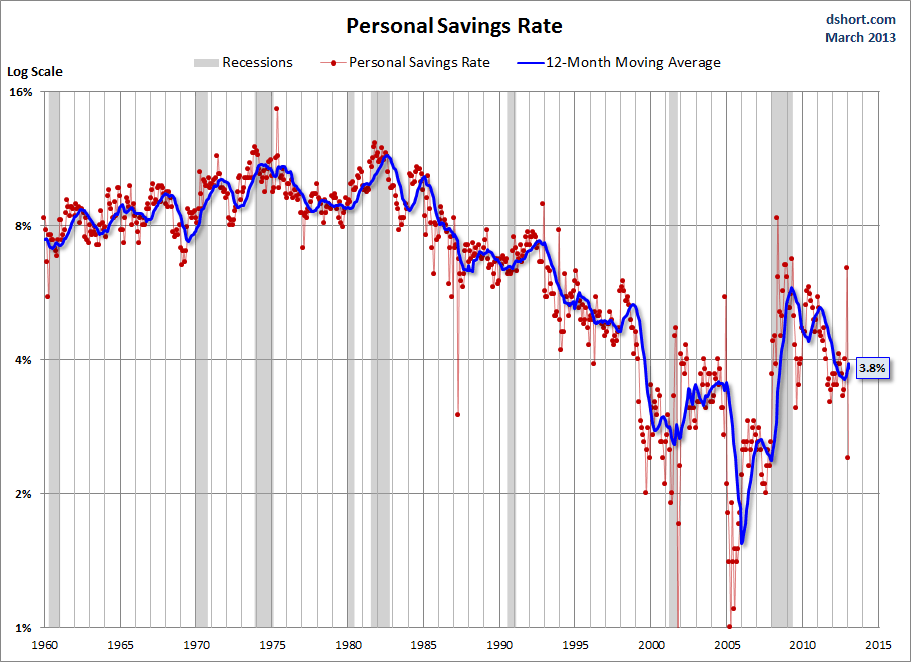Earlier this morning I posted my latest Big Four update featuring today's release of the January data Real Personal Income Less Transfer Payments. Now let's take a closer look at a somewhat different calculation of incomes: "Real" Disposable Personal Income Per Capita.
The first chart shows both the nominal per capita disposable income and the real (inflation-adjusted) equivalent since 2000. The 4 percent month-over-month plunge in incomes is a result of a widespread 2012 year-end tax strategy to take 2013 income early to avoid the anticipated tax hikes. And of course January disposable incomes were reduced by the expiration of the 2% FICA tax reduction.
The BEA uses the average dollar value in 2005 for inflation adjustment. But the 2005 peg is arbitrary and unintuitive. For a more natural comparison, let's compare the nominal and real growth in per capita disposable income since 2000. Do you recall what you we're doing on New Year's Eve at the turn of the millennium? Nominal disposable income is up 49.2% since then. But the real purchasing power of those dollars is up only 13.9%.
Here is a closer look at the real series since 2007.
Year-Over-Year DPI Per Capita
Let's take one more look at real DPI per capita, this time focusing on the year-over-year percent change since the beginning of this monthly series in 1959. I've highlighted the value for the months when recessions start to help us evaluate the recession risk for the current level.
Of the eight recessions since 1959, all started with a YoY number higher than the current -0.09%. However, the January YoY is skewed by the 2012 year-end tax strategy mentioned above. See the similar pattern in January 1993.
Suffice to say that we need this indicator to continue to show some solid improvement in the months ahead, after the oscillation from the year-end tax strategies. An economy without real disposable income growth is heading for trouble.
The Consumption versus Savings Conflict
The US is a consumer-driven economy, as is evident from the 70-plus percent share of GDP held by Personal Consumption Expenditures.
But the money to support consumption has to come from somewhere, and a growth in real disposable income would be the best source. An alternative is to spend more by reducing savings.
As the chart above illustrates, the US savings rate had generally declined since the early 1980s, a trend no doubt supported by the psychology of the secular bull market from 1982 to 2000. After stabilizing for a couple of years following the Tech Crash, a new surge in asset-growth confidence from residential real estate was probably a factor in that trough in 2005. But in 2008 the Financial Crisis reversed the trend ... for a while. The red dots are the actually monthly data points. They illustrate that the saving rate has been slipping back to the 2002-2004 range. The blue line is a 12-month moving average, which helps us understand the underlying trend of this rather volatile indicator.
Can this low savings rate be maintained? Perhaps. However the odds of reductions in retirement entitlements in the years ahead may eventually discourage the trend toward saving less.
For some additional commentaries on income and wages, see the following:
- Real Hourly Wages and Hours Worked
- Monthly Median Incomes Since 2000
- By Quintile and Top Five Percent
- Median Incomes by Age Bracket
- Deflating the American Dream
A Footnote on Annual Revisions

